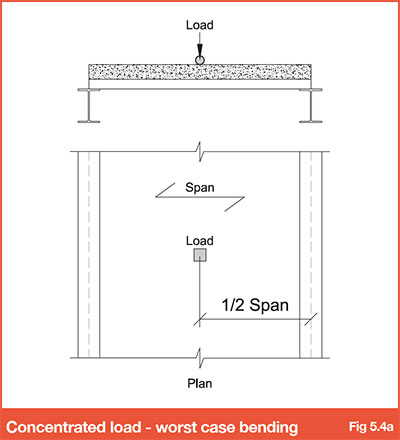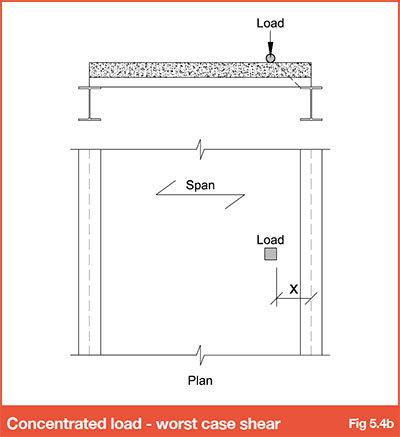Difference between revisions of "5.4 - Moving concentrated loads"
| Line 3: | Line 3: | ||
| − | + | For moving concentrated loads with typical design criteria, the common mode of failure is Horizontal Shear Failure at the deck/concrete interface, it is therefore essential to check the slab for: | |
| − | + | 1. Worst case bending at fire stage (with load positioned at mid-span) | |
| + | |||
| + | |||
| + | [[File:5.4a.jpg|400px]] | ||
| + | |||
| + | |||
| + | 2. Worst case shear at composite stage (with load positioned adjacent to the support) | ||
| + | |||
| + | |||
| + | [[File:5.4b.jpg|400px]] | ||
| + | |||
| + | |||
| + | When designing for concentrated loads, it is important to consider those that may be applied from plant during construction, as these may be more onerous than the final specified loadings for the building and will impact on the reinforcement required for the slab. | ||
Revision as of 16:01, 24 January 2017
For moving concentrated loads with typical design criteria, the common mode of failure is Horizontal Shear Failure at the deck/concrete interface, it is therefore essential to check the slab for:
1. Worst case bending at fire stage (with load positioned at mid-span)
2. Worst case shear at composite stage (with load positioned adjacent to the support)
When designing for concentrated loads, it is important to consider those that may be applied from plant during construction, as these may be more onerous than the final specified loadings for the building and will impact on the reinforcement required for the slab.
Other items within 5.0 - Design - Floor deck Composite stage:-
5.0 - Design - Floor deck Composite stage
5.4 - Moving concentrated loads



